
Aesop's Fables, or the Aesopica, is a collection of fables credited to Aesop, a slave and storyteller who lived in ancient Greece between 620 and 564 BCE. Of varied and unclear origins, the stories associated with his name have descended to modern times through a number of sources and continue to be reinterpreted in different verbal registers and in popular as well as artistic media.

The Ant and the Grasshopper, alternatively titled The Grasshopper and the Ant, is one of Aesop's Fables, numbered 373 in the Perry Index. The fable describes how a hungry grasshopper begs for food from an ant when winter comes and is refused. The situation sums up moral lessons about the virtues of hard work and planning for the future.
The Miser and his Gold is one of Aesop's Fables that deals directly with human weaknesses, in this case the wrong use of possessions. Since this is a story dealing only with humans, it allows the point to be made directly through the medium of speech rather than be surmised from the situation. It is numbered 225 in the Perry Index.
The lion's share is an idiomatic expression which now refers to the major share of something. The phrase derives from the plot of a number of fables ascribed to Aesop and is used here as their generic title. There are two main types of story, which exist in several different versions. Other fables exist in the East that feature division of prey in such a way that the divider gains the greater part - or even the whole. In English the phrase used in the sense of nearly all only appeared at the end of the 18th century; the French equivalent, le partage du lion, is recorded from the start of that century, following La Fontaine's version of the fable.

The Dog and Its Reflection is one of Aesop's Fables and is numbered 133 in the Perry Index. The Greek language original was retold in Latin and in this way was spread across Europe, teaching the lesson to be contented with what one has and not to relinquish substance for shadow. There also exist Indian variants of the story. The morals at the end of the fable have provided both English and French with proverbs and the story has been applied to a variety of social situations.

Belling the Cat is a fable also known under the titles The Bell and the Cat and The Mice in Council. In the story, a group of mice agree to attach a bell to a cat's neck to warn of its approach in the future, but they fail to find a volunteer to perform the job. The term has become an idiom describing a group of persons, each agreeing to perform an impossibly difficult task under the misapprehension that someone else will be chosen to run the risks and endure the hardship of actual accomplishment.

The miller, his son and the donkey is a widely dispersed fable, number 721 in the Perry Index and number 1215 in the Aarne–Thompson classification systems of folklore narratives. Though it may have ancient analogues, the earliest extant version is in the work of the 13th-century Arab writer Ibn Said. There are many eastern versions of the tale and in Europe it was included in a number of Mediaeval collections. Since then it has been frequently included in collections of Aesop's fables as well as the influential Fables of Jean de la Fontaine.
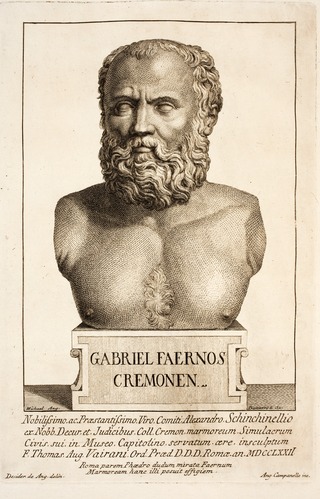
The humanist scholar Gabriele Faerno, also known by his Latin name of Faernus Cremonensis, was born in Cremona about 1510 and died in Rome on 17 November 1561. He was a scrupulous textual editor and an elegant Latin poet who is best known now for his collection of Aesop's Fables in Latin verse.
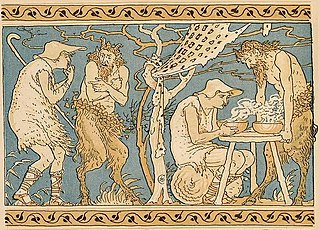
The Satyr and the Traveller is one of Aesop's Fables and is numbered 35 in the Perry Index. The popular idiom 'to blow hot and cold' is associated with it and the fable is read as a warning against duplicity.
The title of Shakespeare's Jest Book has been given to two quite different early Tudor period collections of humorous anecdotes, published within a few years of each other. The first was The Hundred Merry Tales, the only surviving complete edition of which was published in 1526. The other, published about 1530, was titled Merry Tales and Quick Answers and originally contained 113 stories. An augmented edition of 1564 contained 140.
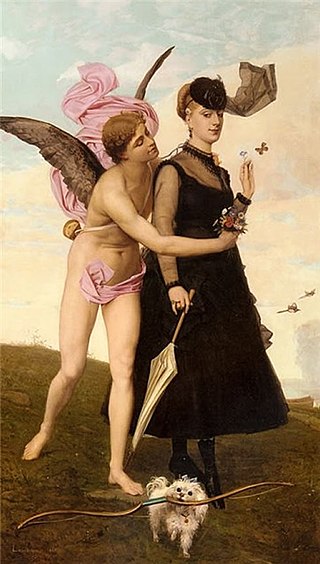
The Young Widow is a fable of Italian origin, made famous by being included in La Fontaine's Fables (VI.21). Originally a cynical attack on female inconstancy, later treatments were more thoughtful.
The Old Woman and the Doctor is a story of Greek origin that was included among Aesop's Fables and later in the 4th century CE joke book, the Philogelos. It is numbered 57 in the Perry Index.
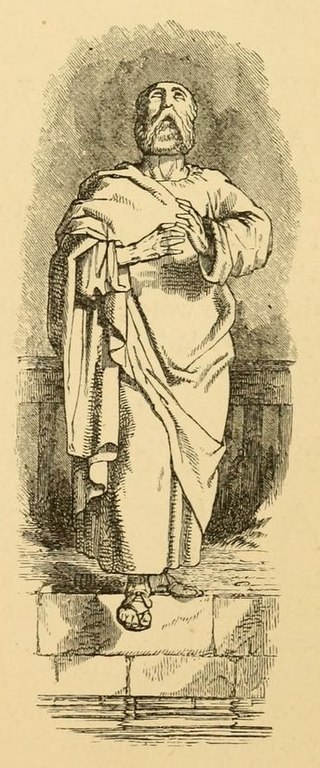
"The Astrologer who Fell into a Well" is a fable based on a Greek anecdote concerning the pre-Socratic philosopher Thales of Miletus. It was one of several ancient jokes that were absorbed into Aesop's Fables and is now numbered 40 in the Perry Index. During the scientific attack on astrology in the 16th–17th centuries, the story again became very popular.

The Frog and the Mouse is one of Aesop's Fables and exists in several versions. It is numbered 384 in the Perry Index. There are also Eastern versions of uncertain origin which are classified as Aarne-Thompson type 278, concerning unnatural relationships. The stories make the point that the treacherous are destroyed by their own actions.

Hercules and the Wagoner or Hercules and the Carter is a fable credited to Aesop. It is associated with the proverb "God helps those who help themselves", variations on which are found in other ancient Greek authors.
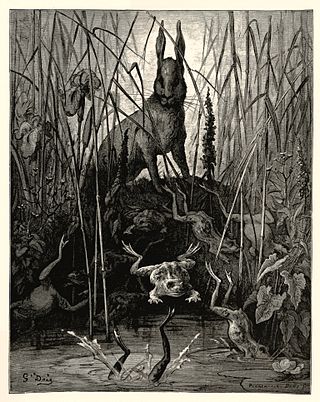
Hares are proverbially timid and a number of fables have been based on this behaviour. The best known, often titled "The Hares and the Frogs", appears among Aesop's Fables and is numbered 138 in the Perry Index. As well as having an Asian analogue, there have been variant versions over the centuries.
There are no less than six fables concerning an impertinent insect, which is taken in general to refer to the kind of interfering person who makes himself out falsely to share in the enterprise of others or to be of greater importance than he is in reality. Some of these stories are included among Aesop's Fables, while others are of later origin, and from them have been derived idioms in several languages.

The story of the fly that fell into the soup while it was cooking was a Greek fable recorded in both verse and prose and is numbered 167 in the Perry Index. Its lesson was to meet adverse circumstances with equanimity, but it was little recorded after Classical times.
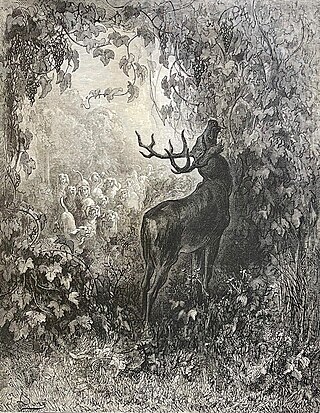
The stagand the vine is a formerly popular and widely translated fable by Aesop. It is numbered 77 in the Perry Index.

The Apeand the Dolphin is one of Aesop's Fables and is numbered 73 in the Perry Index. Due to its appearance among La Fontaine's Fables, it has always been popular in France, but in Britain treatment of the story was rarer until the 19th century.















